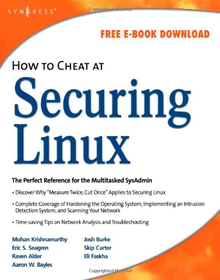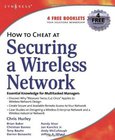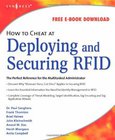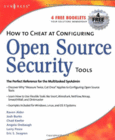How to Cheat at Securing Linux

Book Details:
| Publisher: | Syngress |
| Series: | Syngress , How To |
| Author: | James Stanger |
| Edition: | 1 |
| ISBN-10: | 1597492078 |
| ISBN-13: | 9781597492072 |
| Pages: | 432 |
| Published: | Nov 13 2007 |
| Posted: | Nov 19 2014 |
| Language: | English |
| Book format: | |
| Book size: | 9.73 MB |
Book Description:
Linux servers now account for 33% of all networks servers running worldwide (Source: IDC). The top 3 market share holders in the network server space (IBM, Hewlett-Packard, and Dell) all use Linux as their standard operating system. This book teaches Linux system administrators how to protect their servers from malicious threats.As with any technologies, increased usage results in increased attention from malicious hackers. For years a myth existed that Windows was inherently less secure than Linux, because there were significantly more attacks against Windows machines than Linux. This was a fallacy. There were more attacks against Windows machines because there were simply so many more Windows machines to attack. Now, the numbers tell the exact opposite story. Linux servers account for 1/3 of all servers worldwide, but in 2005 there were 3 times as many high-severity security vulnerabilities discovered on Linux servers (Source: IDC).This book covers Open Source security, implementing an intrusion detection system, unearthing Rootkits, defending against malware, creating Virtual Private Networks, and much more.The Perfect Reference for the Multitasked SysAdmin* Discover Why "Measure Twice, Cut Once" Applies to Securing Linux* Complete Coverage of Hardening the Operating System, Implementing an Intrusion Detection System, and Defending Databases* Short on Theory, History, and Technical Data that Is Not Helpful in Performing Your Job
Download Link:
Related Books:
How to Cheat at Securing a Wireless Network
Wireless connectivity is now a reality in most businesses. Yet by its nature, wireless networks are the most difficult to secure and are often the favorite target of intruders. This book provides the busy network administrator with best-practice solutions to securing the wireless networkWith the increased demand for mobile connectivity and the decrease in cost and in the time required for installation, wireless network connections will make up 20% of all corporate network connections by the end of 2006. With this increase in usage comes a commensurate increase in the network's vulnerability to intrusion. This book provides the typical network administrator with the basic tools and instruction they need to maintain a secure network while allowing acce...
How to Cheat at Deploying and Securing RFID
RFID is a method of remotely storing and receiving data using devices called RFID tags. RFID tags can be small adhesive stickers containing antennas that receive and respond to transmissions from RFID transmitters. RFID tags are used to identify and track everything from Exxon EZ pass to dogs to beer kegs to library books. Major companies and countries around the world are adopting or considering whether to adopt RFID technologies. Visa and Wells Fargo are currently running tests with RFID, airports around the world are using RFID to track cargo and run customs departments, universities such as Slippery Rock are providing RFID-enabled cell phones for students to use for campus charges. According to the July 9 CNET article, RFID Tags: Big Brother in S...
How to Cheat at Configuring Open Source Security Tools
The Perfect Reference for the Multitasked SysAdminThis is the perfect guide if network security tools is not your specialty. It is the perfect introduction to managing an infrastructure with freely available, and powerful, Open Source tools. Learn how to test and audit your systems using products like Snort and Wireshark and some of the add-ons available for both. In addition, learn handy techniques for network troubleshooting and protecting the perimeter.* Take InventorySee how taking an inventory of the devices on your network must be repeated regularly to ensure that the inventory remains accurate.* Use NmapLearn how Nmap has more features and options than any other free scanner.* Implement FirewallsUse netfilter to perform firewall logic and see ...
2007 - 2021 © eBooks-IT.org



